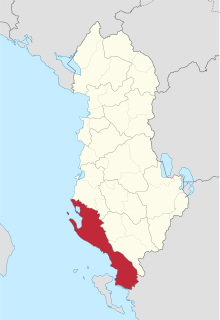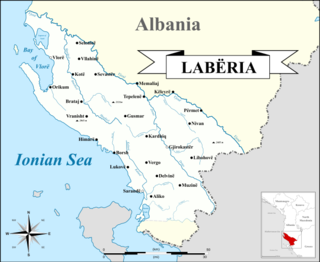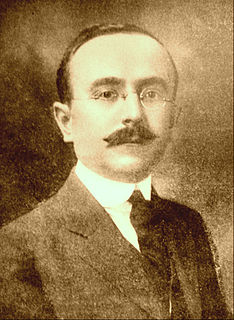The Song of Tana is an Albanian folk ballad. It is considered as one of the songs with the most variants in Albanian music.
The Song of Tana is an Albanian folk ballad. It is considered as one of the songs with the most variants in Albanian music.
According to folklorist Qemal Haxhihasani the song is related with the notion of the art of music. Ramadan Sokoli, one of the most prominent ethnomusicologists of the Balkans associated the song with the belief among past fyell players that the echo of the fyell had a positive influence on the herds. [1]
Generally the song is known as the Herders’ Song (Albanian : Këngë barinjsh). In southern Albania it is known as the Song of Tana (Albanian : Kënga e Tanës), while in northern Albania and Kosovo it is known as the Song of the Shepherdess (Albanian : Kajka e çobaneshës). [1]
In Albania there have been recorded about 70 variants from the regions of Berat, Dibër, Elbasan, Fier, Gjirokastër, Gramsh, Kolonjë, Korçë, Kukës, Lushnjë, Pogradec, Skrapar, Tepelenë and Vlorë. [1] Outside Albania the song is found among the Albanians of Kosovo, the Arvanites of Euboea, southern Greece and the Cham Albanians of northwestern Greece (Çamëria). [1] The Song of Tana can be sung as a polyphonic or monophonic song a cappella or with instrumental accompaniment. [1]

The Albanians are an ethnic group native to the Balkan Peninsula and are identified by a common Albanian ancestry, culture, history and language. They primarily live in Albania, Kosovo, North Macedonia, Montenegro, Serbia as well as in Croatia, Greece, Italy and Turkey. They also constitute a diaspora with several communities established across Europe, the Americas and Oceania.

Polyphony is a type of musical texture consisting of two or more simultaneous lines of independent melody, as opposed to a musical texture with just one voice, monophony, or a texture with one dominant melodic voice accompanied by chords, homophony.

Korçë is a city and municipality in southeastern Albania, and the seat of Korçë County. It was formed at the 2015 local government reform by the merger of the former municipalities Drenovë, Korçë, Lekas, Mollaj, Qendër Bulgarec, Vithkuq, Voskop and Voskopojë, that became municipal units. The seat of the municipality is the city Korçë. The total population is 75,994, in a total area of 806.67 km2 (311.46 sq mi). The population of the former municipality at the 2011 census was 51,152. It is the sixth largest city in Albania. It stands on a plateau some 850 m (2,789 ft) above sea level, surrounded by the Morava Mountains.

The Culture of Albania is a term that embodies the artistic, culinary, literary, musical, political and social elements that are representative of Albania and Albanians. Albanian culture has been considerably shaped by the geography and history of Albania. It grew from that of the Illyrians, with their pagan beliefs and specific way of life in the wooded areas of far Southern Europe. Albanian culture has also been influenced by the Ancient Greeks, Romans, Byzantines and Ottomans.

Tourism in Albania has been a key element to the country's economic activity and is constantly developing. It is characterized by its rich archaeological and cultural heritage dating back to the classical period when Illyrians and Ancient Greeks inhabited the region. Over the course of history, the territory of Albania was occupied and populated by Romans, Byzantines, Venetians and Ottomans. Notably the country features unspoiled beaches, mountainous landscapes, traditional cuisine, archaeological artifacts, unique traditions, low prices and the wild atmosphere of the countryside.
Cham Albanians or Chams, are a sub-group of Albanians who originally resided in the western part of the region of Epirus in Northwestern Greece, an area known among Albanians as Chameria. The Chams have their own peculiar cultural identity, which is a mixture of Albanian and Greek influences as well as many specifically Cham elements. A number of Chams contributed to the Albanian national identity and played an important role in starting the renaissance of the Albanian culture in the 19th century. The Chams speak their own dialect of the Albanian language, the Cham Albanian dialect, which is a Southern Tosk Albanian dialect and one of the two most conservative ones; the other being Arvanitika.

Greater Albania is an irredentist concept that seeks to unify the lands that many Albanians consider to form their national homeland, based on claims on the present-day or historical presence of Albanian populations in those areas. In addition to the existing Albania, the term incorporates claims to regions in the neighbouring states, the areas include Kosovo, the Preševo Valley of Serbia, territories in southern Montenegro, northwestern Greece, and a western part of North Macedonia.

The music of Albania is associated with the country of Albania and Albanian communities. Music has a long tradition in the country and is known for its regional diversity, from the Ghegs in the North to the Tosks in the South. It is an integral part of the national identity, strongly influenced by the country's long and turbulent history, which forced Albanians to protect their culture from their overlords by living in rural and remote mountains.

Vlorë County is one of the 12 counties of the Republic of Albania with the capital in Vlorë. The county spans 2,706 square kilometres (1,045 sq mi) and has a total population of 188,922 people as of 2020. It borders the counties of Fier and Gjirokastër, as well as the Adriatic and Ionian Sea.

Labëria is a historic region that is roughly situated in southwestern Albania. Its inhabitants are known as Labs and its boundaries reach from Vlorë to Himara in the south, to the Greek border near Sarandë, incorporating the Kurvelesh region of Gjirokastër District and extending east to the city of Tepelenë.
Muhaxhir and Muhaxher are terms borrowed from Ottoman Turkish: muhacir and derived from Arabic muhajir. The term Muhaxhir(ë) refers to Ottoman Albanian communities that left their homes as refugees or were transferred, from Greece, Serbia and Montenegro to Albania, Kosovo and to a lesser extent North Macedonia during and following various wars.
The polyphonic song of Epirus is a form of traditional folk polyphony practiced among Albanians, Aromanians, Greeks and Macedonians in southern Albania and northwestern Greece. The polyphonic song of Epirus is not to be confused with other varieties of polyphonic singing, such as the yodeling songs of the region of Muotatal, or the Cantu a tenore of Sardinia.
Myzeqe or Myzeqeja is a plain in the southwestern-central Albania, sometimes referred to as being between the Shkumbin and Seman rivers, and sometimes extending south to the Vjose river north of Vlorë. Administratively, the region falls mainly within Lushnjë and Fier District. Other terms like Myzeqeja e Vogël, Myzeqeja e Beratit, or Myzeqeja e Vlorës are used to point respectively to the Fier part of the region, and to tiny parts that fall into the adjacent districts of Berat and Vlorë. It stretches 65 km north-south and 50 km east-west, with a total area of around 1350 square kilometers. The oldest population to inhabit the Myzeqe plain are the Albanian tribe of the Lalë.

The Albanian Declaration of Independence was the declaration of independence of Albania from the Ottoman Empire. Independent Albania was proclaimed in Vlorë on 28 November 1912. Six days later the Assembly of Vlorë formed the first Government of Albania which was led by Ismail Qemali and the Council of Elders (Pleqnia).
The Greeks of Albania are ethnic Greeks who live in or originate from areas within modern Albania. They are mostly concentrated in the south of the country, in the areas of the northern part of the historical region of Epirus, in parts of Vlorë County, Gjirokastër, Korçë and Berat County. The area is also known as Northern Epirus. Consequently, the Greeks hailing specifically from South Albania/Northern Epirus are widely known as Northern Epirotes. The Greeks who live in the "minority zones" of Albania are officially recognised by the Albanian government as the Greek National Minority of Albania.

The Autonomous Republic of Northern Epirus was a short-lived, self-governing entity founded in the aftermath of the Balkan Wars on February 28, 1914 by Greeks living in southern Albania.

The Cham Albanian dialect is the dialect of the Albanian language spoken by the Cham Albanians, an ethnic Albanian minority in the Epirus region of northwestern Greece.
The Song of Çelo Mezani is an Albanian polyphonic folk song. It is considered to be the best-known Cham Albanian song. The song increased the awareness in Albania about the Chameria region and its history.
Protocol of Kapshtica also known as Kapshtica Protocol, or Kapshtica Agreement, was an agreement between Albanian and Greek representatives signed in the border town of Kapshticë on 28 May 1920. Under this agreement both sides accepted the pre-World War I Greek-Albanian border status, as well as a number of provisions for the protection of the local Greek population of Korçë District and its educational and religious rights.

Kolë Tromara (1882–1945) was an Albanian nationalist and political figure of the first half of the 20th century.